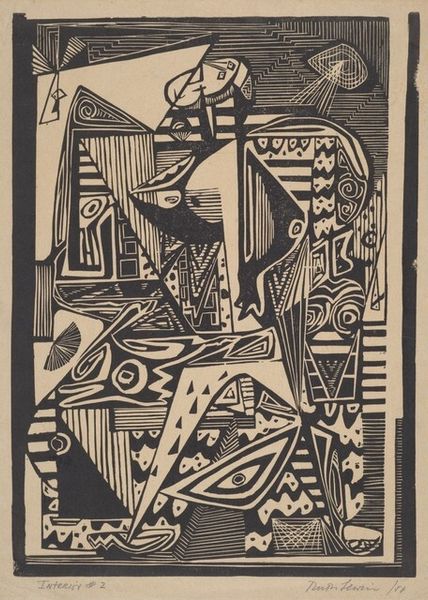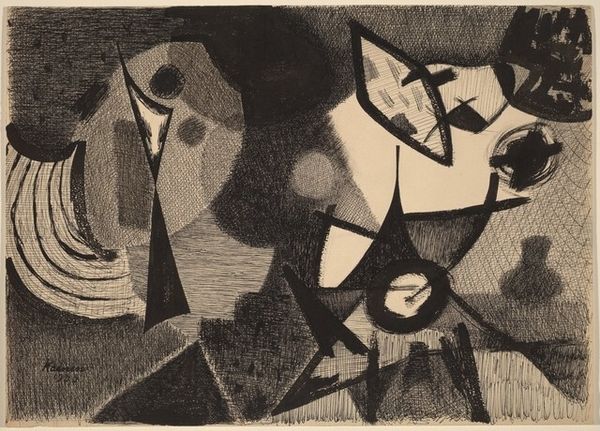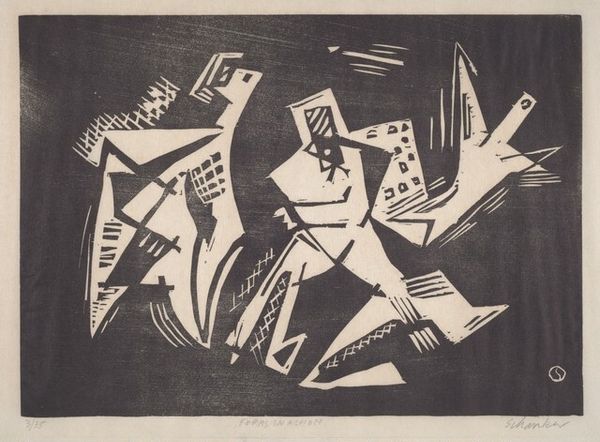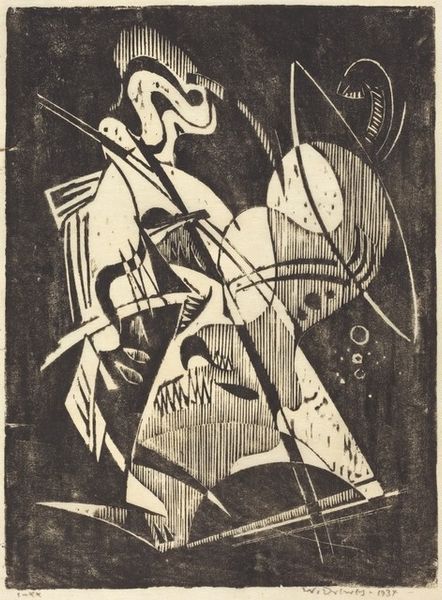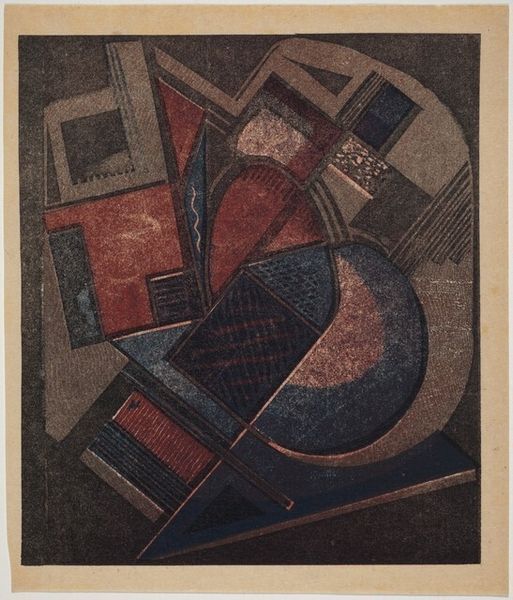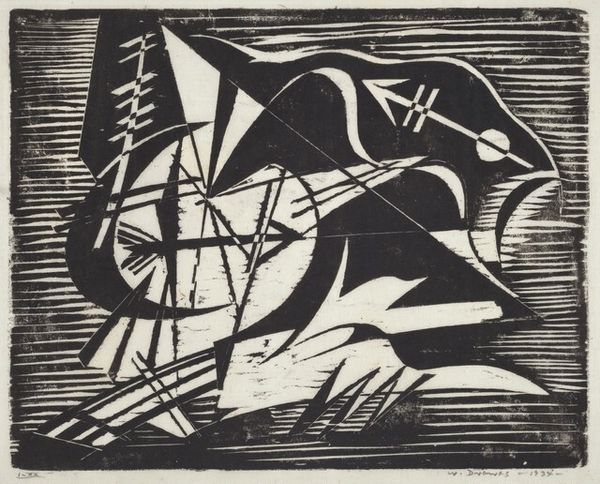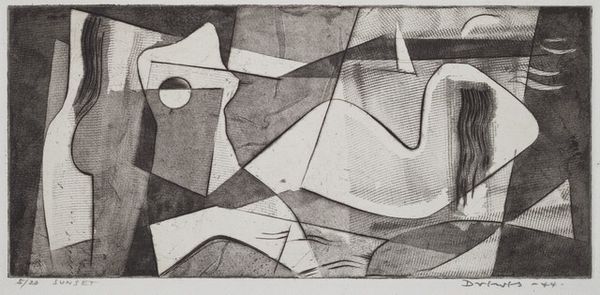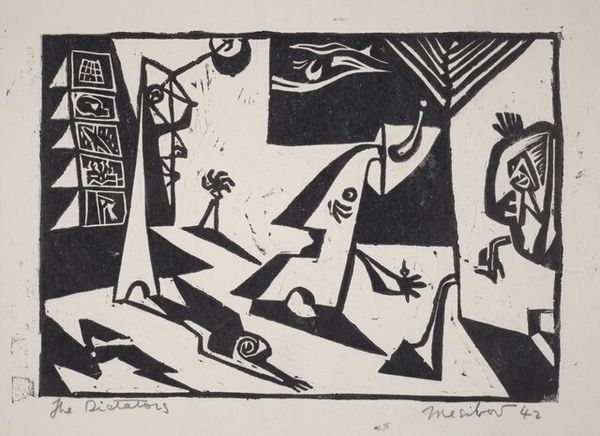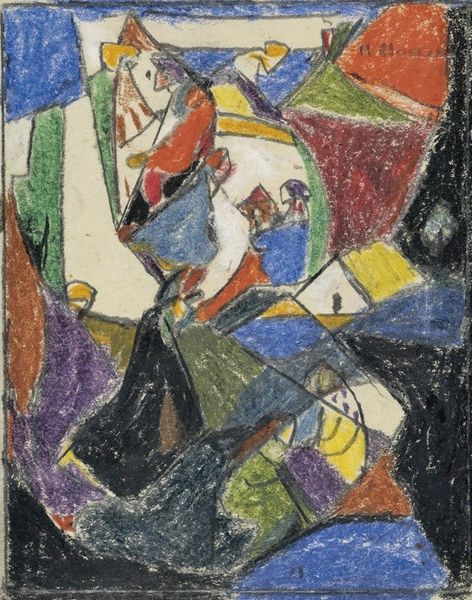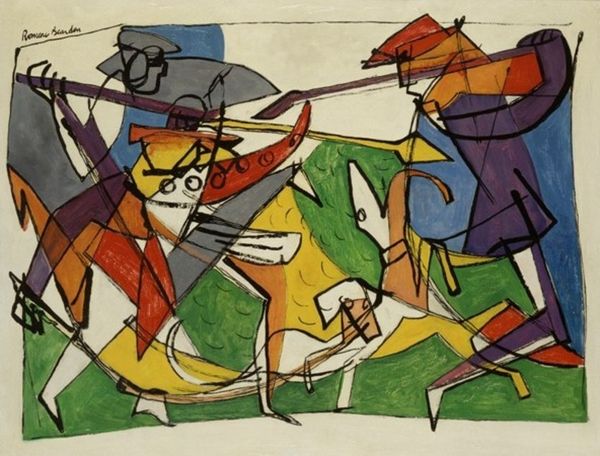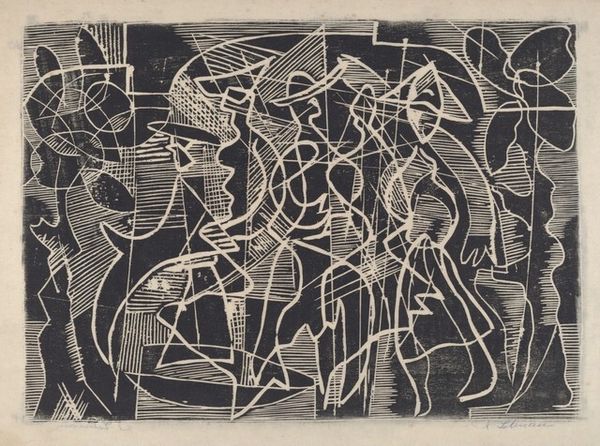
Copyright: National Gallery of Art: CC0 1.0
Editor: Here we have Werner Drewes’ “Jealous Cock,” a woodcut print from 1944. It’s really quite striking – a vibrant, fragmented bird that seems to almost vibrate off the page. How would you interpret this work? Curator: It’s compelling to consider this piece in terms of its materiality and production, particularly given its date. A woodcut, inherently reliant on manual carving and printing, points to a specific labor process. How does the texture of the wood grain contribute to the overall energy of the composition, in your opinion? Editor: It makes it feel handmade, like it has a history. The roughness contrasts with the abstract shapes and colors, making them seem more intentional. Does that labor-intensive process relate to the subject matter in any way? Curator: Potentially. While “Jealous Cock” directly references animalistic emotion, it’s crucial to investigate how Drewes, situated within the German Expressionist movement and grappling with the upheavals of the mid-20th century, engaged with themes of conflict through this medium. The woodcut, historically associated with folk art and political pamphlets, imbues the artwork with a particular cultural weight. Do you see echoes of social commentary embedded in the abstract patterns? Editor: It does make you wonder about the social commentary of the time, or even his own economic status as an artist. The jagged lines could represent anxiety and disruption in a really visceral way, amplified by the physical process. Curator: Precisely! And considering that woodcuts allowed for relatively inexpensive reproduction, who was the intended audience? Was this a critique accessible to a broad viewership, or something else entirely? What does this mean for our understanding of the intersection between 'high art' and craft during a time of societal turbulence? Editor: So, it's not just about the bird itself, but the whole system of how the image was made and circulated. I'm starting to see so many more layers here. Curator: Indeed. By considering the woodcut's place within the artistic landscape of 1944, we gain a richer perspective on its meaning.
Comments
No comments
Be the first to comment and join the conversation on the ultimate creative platform.
